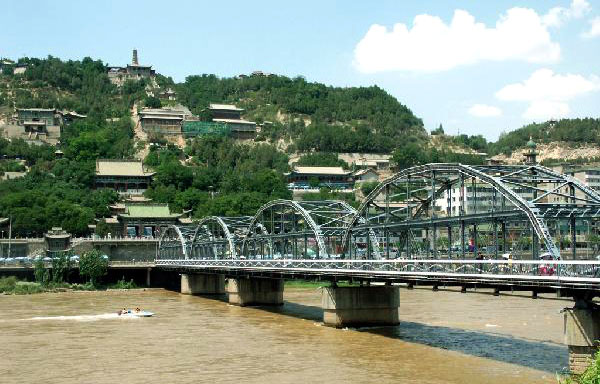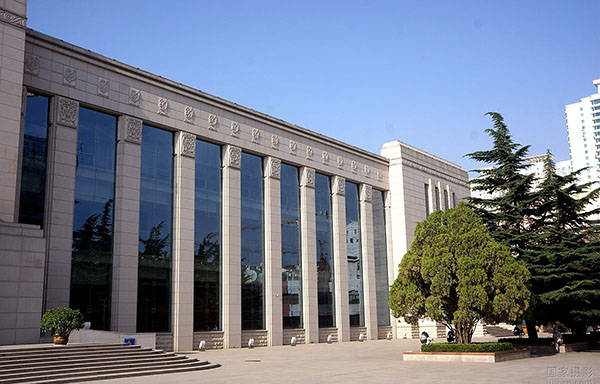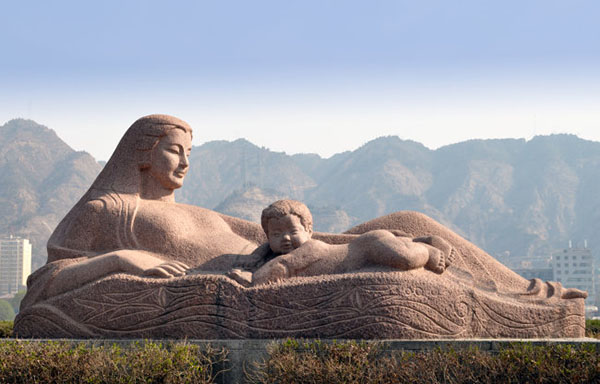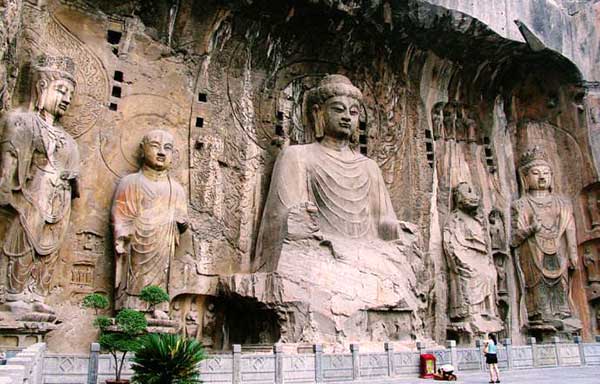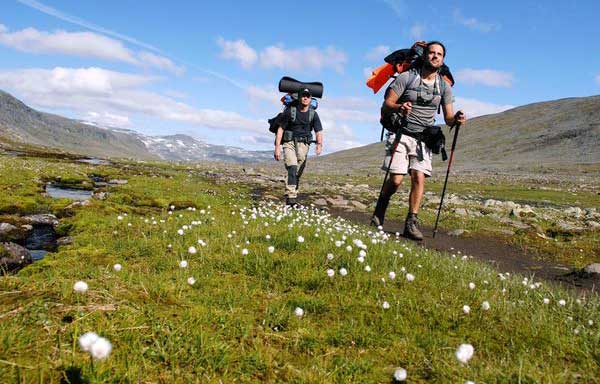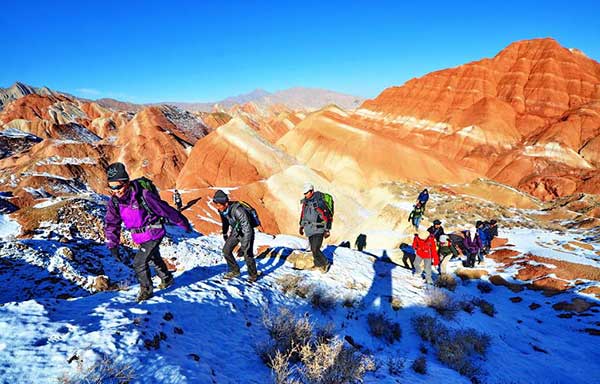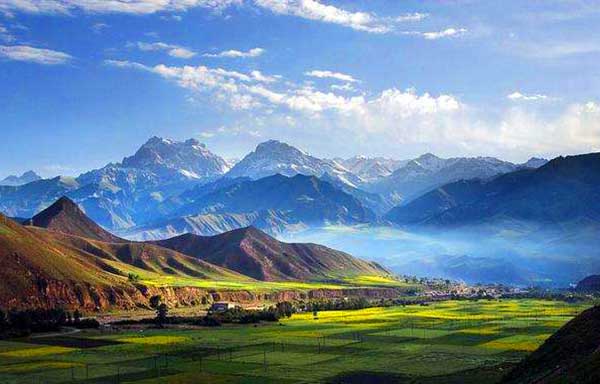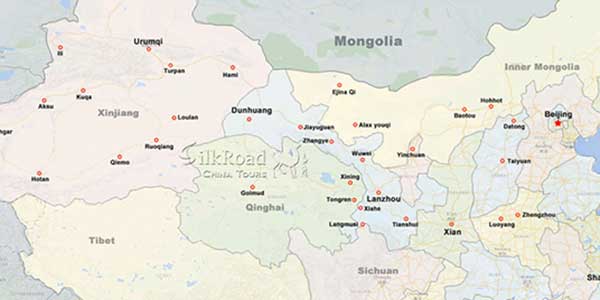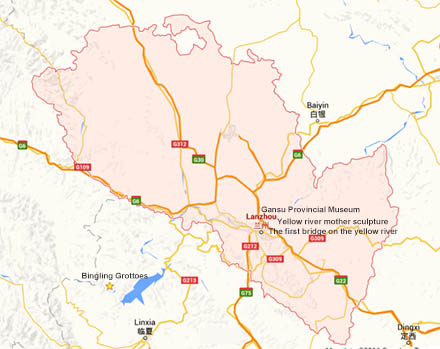 The Bingling Grottoes (Bingling shiku), also known as the Bingling Temple (Bingling si), are a series of Buddhist caves that are situated on a not easily accessible cliff face, some 80km from Lanzhou. At some point the caves were named the Thousand Buddha Caves (Qian fodong), despite the fact that there have never been more than 200 grottoes.The total at present is 183.
The Bingling Grottoes (Bingling shiku), also known as the Bingling Temple (Bingling si), are a series of Buddhist caves that are situated on a not easily accessible cliff face, some 80km from Lanzhou. At some point the caves were named the Thousand Buddha Caves (Qian fodong), despite the fact that there have never been more than 200 grottoes.The total at present is 183.
These are some of the oldest caves in China and thankfully, despite their age, they still contain many well preserved statues and murals. Although a little out of the way, the grottoes are a day trip that should not be missed.
The first cave was built here in 420 AD, by daring Buddhists who descended from the cliff on ropes to carve their masterpieces. Although the cave complex was enlarged gradually over many centuries, it is the work of both the Song (960-1279 AD) and the Ming (1368-1644 AD) Dynasties that remains most impressive.The temple was, in-between these golden years, to become a Tibetan Monastery (in the Yuan Dynasty, 1271-1368 AD).
Within and on the cliff are a series of winding walkways and stairs that will lead you around the site. The caves, carved out of the cliff's porous stone, contain over 700 statues, of both clay and porous rock, and hundreds of frescoes. Of the statues, the largest is a giant 27 meter-high seated Maitreya, the future Buddha, and the smallest is a miniscule 25 centimeters.It is the lower caves (Xia si) that are the most impressive. Cave 169 is considered to be one of China's oldest grottoes, housing a faded Buddha and 2 Boddhisattvas. This cave, in an area of 200 square meters, also holds the earliest epigraph of any of China's caves.
Besides the temple, the journey itself is impressive, especially within close proximity to the caves. The cliff face, 60 meters high, is part of the northern side of a gorge formed by the Yellow River.Below the caves themselves is the Liujiaxia Reservoir, that will take a good three hours to cross, allowing you to enjoy at your leisure the stunning scenes before you!
What does the Name Bingling Si Grottoes Mean?
Bingling Si means "thousand Buddha" in Chinese and "ten-thousand Buddhas” in Tibetan. At some point the caves were named the Thousand Buddha Caves (Qian fodong), despite the fact that there have never been more than 200 grottoes. The total caves at present are 183.
Caves in Bingling Si Grottoes
Bingling Si Grottoes, carved out of the cliff's porous stone, contain over 700 statues, of both clay and porous rock, and hundreds of frescoes.
Bingling Si Grottoes' caves is some of the oldest caves in China and thankfully, despite their age, they still contain many well preserved statues and murals.
The first cave was built here in 420 AD, by daring Buddhists who descended from the cliff on ropes to carve their masterpieces. Although the cave complex was enlarged gradually over many centuries, it is the work of both the Song (960-1279 AD) and the Ming (1368-1644 AD) Dynasties that remains most impressive. The temple was, in-between these golden years, to become a Tibetan Monastery (in the Yuan Dynasty, 1271-1368 AD).
★Of the statues, the largest is a giant 27 metes (80 feet) high seated Maitreya, the future Buddha, and the smallest is a miniscule 25 centimeters. Cave No.171 houses the largest Buddhist statue, 27 meters high, with its upper body carved into the cliff and lower body made of clay. The statue seated cross-legged in meditation on a pedestal with the right hand resting on the lap and the left hand on the abdomen was sculptured in the 19th year of Dezong Reign of the Tang Dynasty (803).
★Grotto No. 169 is considered to be one of China's oldest grottoes, housing a faded Buddha and 2 Bodhisattvas. This cave, in an area of 200 square meters, also holds the earliest epigraph of any of China's caves. Grotto No.169 is the tallest one carved within a natural cave 8 meters deep, 26 meters wide and 18 meters high, the shape of which is similar to that of the opposite mountain rang across the river. The walls of the grotto are covered with niches, only 24 of which still exist, enshrining 19 stone statues and 39 clay figures. The grotto also houses the largest mural in Binglingsi, which is still bright and beautiful in color.
★It is the lower caves (Xia si) that are the most impressive.
Besides the temple, the journey itself is impressive, especially within close proximity to the caves. The cliff face, 60 meters high, is part of the northern side of a gorge formed by the Yellow River. Below the caves themselves is the Liujiaxia Reservoir, that will take a good three hours to cross, allowing you to enjoy at your leisure the stunning scenes before you!
What consists of Bingling Si Grottoes?
Bingling Si Grottoes consist of three parts: Shangsi, Donggou, and Xiasi. Shangsi were ruined by fire and what remained are only a few statues of Buddhas. In Xiasi, there are 34 caves and 14 niches still existing. They contain 694 stone statues, 82 clay figures, 5 stone carvings and clay pagodas and 900 square meters of murals. Binglingsi is one of the ten largest Chinese grottoes.
Gallery
Attractions in the area
Related Tours
General Information
Alias: No
Loc: 70 km from Lanzhou
Entrance: 50+120 RMB
Open Time: 8:30 - 5:30
Relevant blogs
-
How did the name of Tianshui in Gansu come about?
The name Tianshui is very pleasant to the ear, and it reminds one of that exquisitely beautiful verse, "After getting drunk, one doesn't know if the sky is in
-
The 8th Silk Road Hotel Festival was successfully held i
On December 27th, the "8th Silk Road Hotel Festival" grandly opened at the Yujing International Hotel in Zhangye. This hotel festival gathered industry experts,
-
The Karez Irrigation System in Turpan has been selected
On September 3rd, at the 75th Executive Council Meeting of the International Commission on Irrigation and Drainage held in Sydney, Australia, the 2024 (11th bat
-
What is the connection between "dragons" and "snakes
In traditional Chinese culture, the snake has a dual identity of auspiciousness and danger. Ancient people believed that the snake not only possesses divine cha
-
Endangered Przewalski's Horses Spotted at Dunhuang Yume
<p>In early February, a group of special "visitors"—the Przewalski's horses—appeared at the Dunhuang Yumen Pass scenic area in Gansu Province, a U
-
The Fourth Dunhuang Cultural Tourism Supplier Conference
On the morning of February 18th, the Fourth Dunhuang Cultural Tourism Supplier Conference in Northwest China commenced at the Dunhuang International Convention







